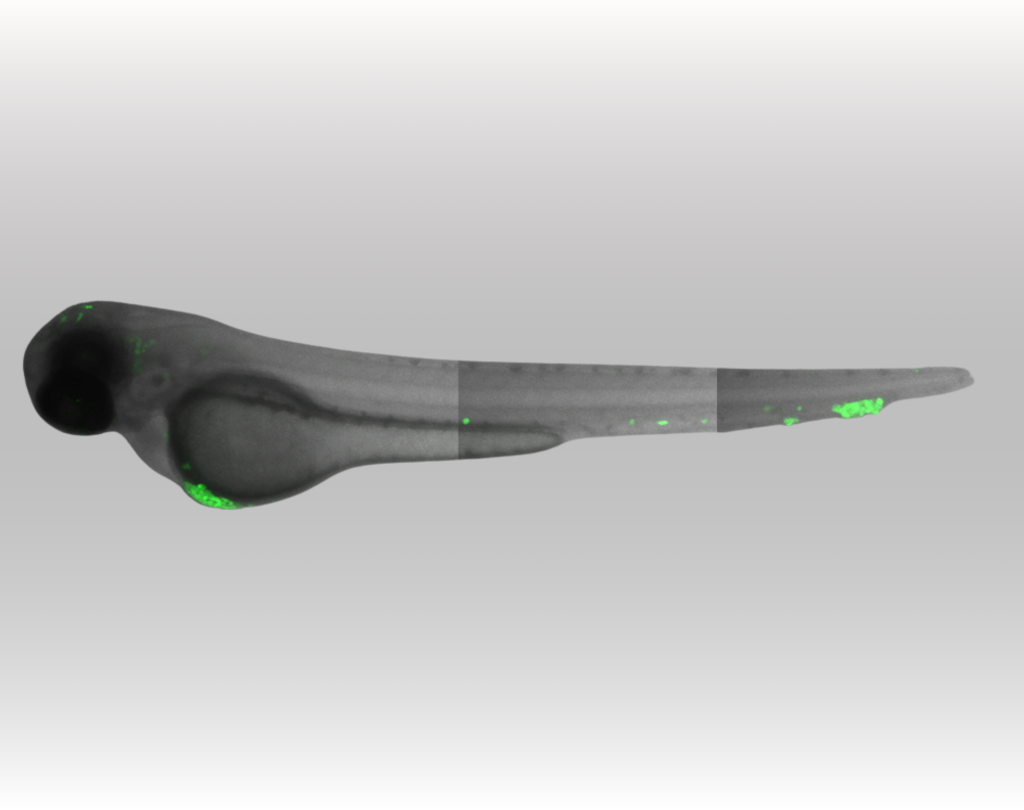A Light Against Cancer
A team of scientists at St. Anna Children’s Cancer Research Institute (St. Anna CCRI) has developed a method to eliminate cancer cells with precision, without harming healthy tissue. Using a light-activatable compound called SBTubA4P, they successfully destroyed tumor cells in an animal model. This promising discovery could one day offer a gentler alternative to chemotherapy.
Traditional chemotherapy relies on highly potent drugs that kill cancer cells. However, these medications also attack healthy cells, often causing severe side effects. Researchers are therefore searching for alternatives that exclusively target tumor cells. One promising approach is photopharmacology, in which drugs are activated only by targeted light exposure.
First author, PhD-Student Adam Varady and a research team at St. Anna Children’s Cancer Research Institute (St. Anna CCRI) focused on SBTubA4P, a chemical compound that remains harmless in its inactive state. Only when exposed to ultraviolet (UV) light does the drug activate and unleash its cancer-fighting effects. The key advantage: Activation can be precisely directed at the tumor, leaving healthy tissue untouched.

zebrafish larva with transplanted sarcoma cells (green), metastases can be seen in the tail
A Model for Human Cancer
To test the effectiveness of this method, the researchers used a specialized zebrafish model. The larvae of these fish are transparent, allowing direct observation of cancer cells. The scientists implanted human bone cancer cells (osteosarcoma and Ewing sarcoma) into the fish and treated them with SBTubA4P. The tumor was then specifically exposed to UV light.
The results were remarkable: The cancer cells died while the surrounding tissue remained intact. In some cases, tumors disappeared entirely without causing systemic side effects.
The researchers also discovered an additional mechanism that enhances SBTubA4P’s effectiveness. Under UV exposure, the molecule generates reactive oxygen species (ROS). These aggressive molecules damage the structures of cancer cells, accelerating their destruction.
Potential Applications in Medicine
Although this method, published in the journal Disease Models & Mechanisms, has so far only been tested in zebrafish, it could one day be applied to humans. One challenge remains: the delivery of light. UV light penetrates only a few millimeters into tissue. Possible solutions could include optical fibers that direct light precisely into the tumor or novel materials that transfer high-energy light to the drug.
“Our study shows that SBTubA4P is a promising candidate for precise cancer therapy,” explains lead researcher Martin Distel. “The next step is to further develop this approach to make it suitable for clinical applications.”
Light-controlled chemotherapy using SBTubA4P could one day offer a more targeted and less harmful treatment option for cancer patients. The research is still in its early stages, but the results provide a hopeful outlook for a new generation of precise cancer therapies.